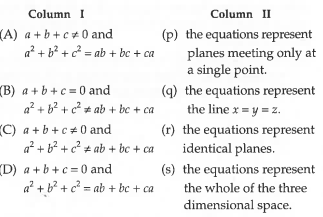We have a stringed musical instrument. The string is plucked in the middle first with a force of greater magnitude and then with a force of smaller magnitude. In which case would the instrument produce a louder sound?
To determine which case produces a louder sound when plucking a stringed musical instrument, we can analyze the relationship between the force applied, the tension in the string, and the resulting sound produced.
1. Understanding the Force Applied:
- When the string is plucked, the force applied to the string causes it to vibrate. The magnitude of this force directly affects the tension in the string.
2. Effect of Force on Tension:
- A greater force applied to the string results in higher tension. This is because tension in the string is proportional to the force applied. Therefore, if we apply a greater force, the tension in the string increases.
3. Vibration and Amplitude:
- The tension in the string affects how it vibrates. Higher tension leads to greater amplitude of vibration. Amplitude refers to the maximum extent of a vibration or oscillation, which is crucial in sound production.
4. Loudness of Sound:
- Loudness of sound is directly related to the amplitude of the vibrations. The greater the amplitude, the louder the sound produced. This is because a larger amplitude means that the air particles are displaced more significantly, creating more intense sound waves.
5. Comparison of Cases:
- In the first case, where the string is plucked with a greater force, the amplitude of the vibration will be larger due to the increased tension. Therefore, the sound produced will be louder.
- In the second case, where the string is plucked with a smaller force, the amplitude will be smaller, resulting in a quieter sound.
6. Conclusion:
- The instrument will produce a louder sound when the string is plucked with a greater force compared to when it is plucked with a smaller force.
Final Answer:
The instrument will produce a louder sound when the string is plucked with a greater magnitude of force.
---
- When the string is plucked, the force applied to the string causes it to vibrate. The magnitude of this force directly affects the tension in the string.
- A greater force applied to the string results in higher tension. This is because tension in the string is proportional to the force applied. Therefore, if we apply a greater force, the tension in the string increases.
- The tension in the string affects how it vibrates. Higher tension leads to greater amplitude of vibration. Amplitude refers to the maximum extent of a vibration or oscillation, which is crucial in sound production.
- Loudness of sound is directly related to the amplitude of the vibrations. The greater the amplitude, the louder the sound produced. This is because a larger amplitude means that the air particles are displaced more significantly, creating more intense sound waves.
- In the first case, where the string is plucked with a greater force, the amplitude of the vibration will be larger due to the increased tension. Therefore, the sound produced will be louder.
- In the second case, where the string is plucked with a smaller force, the amplitude will be smaller, resulting in a quieter sound.
- The instrument will produce a louder sound when the string is plucked with a greater force compared to when it is plucked with a smaller force.
The instrument will produce a louder sound when the string is plucked with a greater magnitude of force.
Topper's Solved these Questions
- BOOK - NCERT EXEMPLARCHAPTER - SOUNDEXERCISE - SHORT ANSWER QUESTIONS5videos
SOUND
- BOOK - NCERT EXEMPLARCHAPTER - SOME NATURAL PHENOMENAEXERCISE - LONG ANSWER QUESTIONS5videos
SOME NATURAL PHENOMENA
- BOOK - NCERT EXEMPLARCHAPTER - STARS AND SOLAR SYSTEMEXERCISE - LONG ANSWER QUESTIONS7videos
STARS AND SOLAR SYSTEM
Similar Questions
Knowledge Check
- Question 1 - Select One
A sound is produced by plucking a string in a musical instrument, then
AOboesBVeenaCMridangamDViolin - Question 2 - Select One
Unlike a laboratory sonometer, a stringed instrument is seldom plucked in the middle. Supposing a sitar string is plucked at about 14th of its length from the end. The most prominent harmonic would be
AEighthBFourthCThirdDSecond - Question 3 - Select One
Consider the following linear equations ax+by+cz=0,bx+cy+az=0,cx+ay+bz=0.Matchthestatement∈ColumnIwiththe∝erties∈ColumnIIand∈dicateyouranswerbydarken∈gtheap∝riatebu≤s∈the4 xx 4 matrix given in the ORS.
 AOboesBVeenaCMridangamDViolin
AOboesBVeenaCMridangamDViolin
Name some musical instruments that produce sound by vibration of stretched strings, by vibration of stretched membranes and vibration of air columns
View Solution…………………is a musical instrument in which sound is produced by setting an air column into vibrations.
View SolutionAssertion (A): The musical notes produced by two musical instruments, like guitar and sitar are different even if the length and the thickness of the strings in both instruments are the same.
Reason (R) : The difference in two sounds of equal pitch and loudness can be distinguished by a characteristic property called quality of sound ro timbre.View SolutionAssertion (A): The musical notes produced by two musical instruments, like guitar and sitar are different even if the length and the thickness of the strings in both instruments are the same.
Reason (R) : The difference in two sounds of equal pitch and loudness can be distinguished by a characteristic property called quality of sound ro timbre.View SolutionFigure shows four situations in which a force is applied to a block. In all four cases, the force has the same magnitude, and the displacement of the block is to the right and of the same magnitude. Which of the following cases work done by the applied force on the block zero?
 View Solution
View Solution

